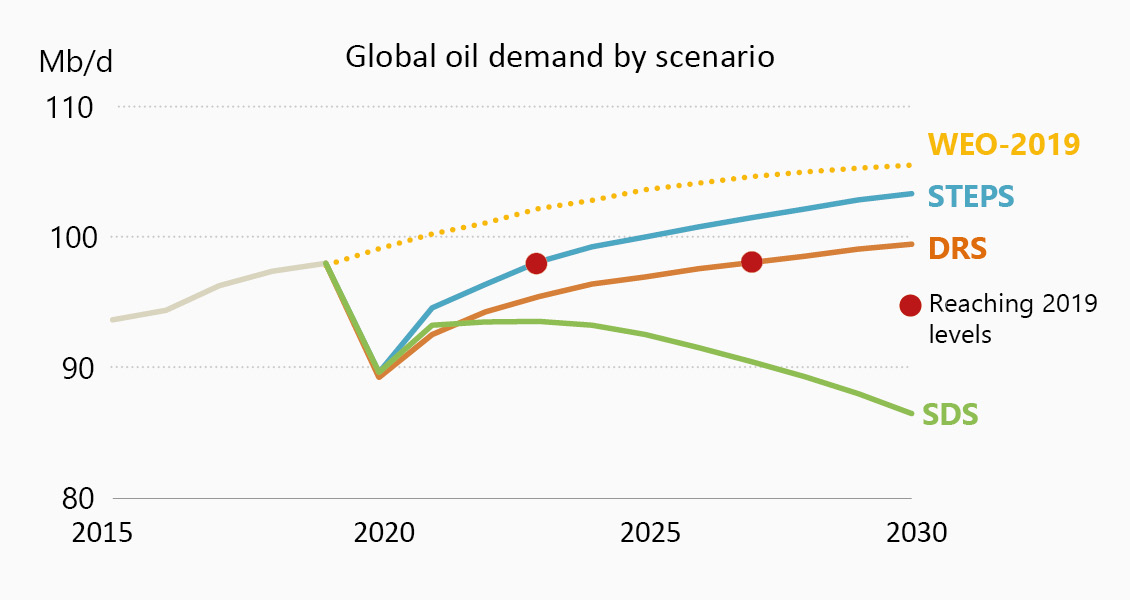The International Energy Agency (IEA) recently released its annual World Energy Outlook, which provides a comprehensive view of how the global energy system could develop in the coming decades. It offers analysis through four long-term energy scenarios and targets the key uncertainties facing the energy sector in relation to Covid-19 while mapping out the choices that would pave the way towards a sustainable recovery. The new report provides a sobering review of the pandemic’s impact: global energy demand is set to drop by 5% in 2020, energy-related CO2 emissions by 7%, and energy investment by 18%.
In the Stated Policies Scenario (STEPS), which reflects today’s announced policy intentions and targets, global energy demand rebounds to its pre-crisis level in early 2023. However, this does not happen until 2025 in the event of a prolonged pandemic and deeper slump, as shown in the Delayed Recovery Scenario (DRS), with large falls in investment increasing the risk of future market volatility. The Sustainable Development Scenario (SDS) puts emphasis on renewables, with solar being the main source of growth, although the report shows that strong growth of renewables needs to be paired with robust investment in electricity grids. The fourth scenario is the Net Zero Emissions by 2050 case, which extends the sustainable Development Scenario analysis to model what would be needed in the next ten years to put global CO₂ emissions on track for net zero by 2050.





